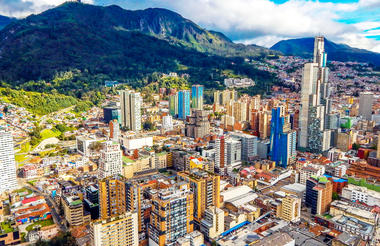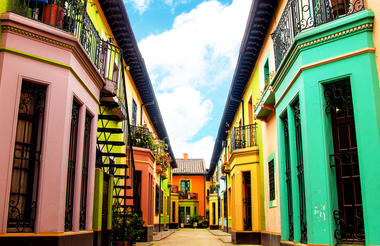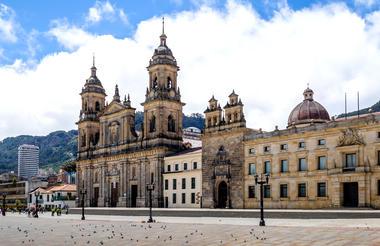Located 2600m above sea level at the base of the Guadalupe and Monserrate mountains is Colombia’s capital and one of South America’s leading cultural destinations. Patrons of the arts are spoilt for choice with the city’s museums, art galleries, stage theatres, and national monuments. So impressive is Bogota’s collection of libraries and academic institutions that the city has earned itself the nickname 'The Athens of South America'. The historic district of La Candelaria boasts many of these offerings as well as some truly breathtaking historic architecture. Must-see attractions in Bogota include the weird and wonderful Museo Botero; famous Museo del Oro, filled with astonishing displays of gold items and pre-hispanic art; and the atmospheric, grandiose Church of San Francisco, with origins dating to around 1557.



Situated just east of the Andes in Colombia, the Los Llanos is a vast grassland plain. These seasonally flooded lowlands cover almost half the country and boast archaeological treasures, natural wonders, and beautiful views. The Los Llanos teems with abundant wildlife - over 100 species of mammals and reptiles, and over 700 species of birds have their home here (including some of the most endangered species on earth). However, for many travellers, the undeniable highlight here is the multicoloured Cano Cristales river network, within the Parque Nacional Natural Sierra de La Macarena. Visit a local hacienda, try horse riding or piranha fishing, or take guided hikes. Don’t miss the opportunity to make use of the wide selection of safari-style game drives on offer.



Walking the cobbled streets of Guatapé in Colombia’s Antioquia district might have you believing you’ve stepped back in time. This picturesque village, surrounded by green hills and freshwater lakes, tells its own story by way of beautiful pastel-coloured paintings that adorn the lower half of most of the buildings. On weekends, the waterfront boardwalk bustles with local vendors selling art, food, and souvenirs. Boat trips are on offer, while adventure lovers can take a ride on the Cable Vuelo, a canopy zip-line over Guatapé Lake, or climb El Peñon, the massive monolithic structure for which the town is famous.



Situated in Colombia’s Choco Department, the Utría National Natural Park is set halfway between Bahía Solano and Nuquí. It is known for its mountainous landscapes dotted with diverse fauna and flora. Its high altitude rainforest receives some of the highest rainfall in the world at over more than 10,000 millimetres annually. Encompassing 54,000 hectares, the landscape features lush tropical forest, mangroves, secluded beaches and intricate waterways. Visitors can look forward to exploring the network of nature paths, spotting wildlife and soaking up beautiful natural scenery. Other popular activities include: kayaking, whale watching, a jungle hike to Playa Cocalito, and a boat trip to Playa Blanca for snorkelling. Don’t miss the opportunity to search for glow-in-the-dark mushrooms, an unusual but popular evening activity.



Set off the coast of Nicaragua, San Andres is the primary island of the Colombian archipelago of the same name. The seahorse-shaped island boats exquisite and colourful marine life and idyllic white-sand beaches. While the warm tropical waters are the main reason to visit for many travellers, the mangrove forests and coconut palm plantations offer further beautiful settings for adventure. The island is also home to a rich culture. A history of Dutch, English, Spanish, African, and West Indian influences has created a unique Creole-speaking people known as the Raizel; their culture and tradition can be explored in the various eco-tourism parks and experiences.



An idyllic escape if there ever was one, the island of Providencia is a virtually untouched paradise that offers visitors life at its simplest, and arguably its most beautiful. One is immediately struck by the brilliant colours of the waters –hues that result from submerged volcanic rock and the second-largest barrier reef in the northern hemisphere. Rustic cottages, hotels, cabañas and a few restaurants are the only infrastructure, while the 300-year-old English-Caribbean heritage of the locals creates a culturally rich sanctuary that begs visitors to stay more than the single day required to explore the island.







